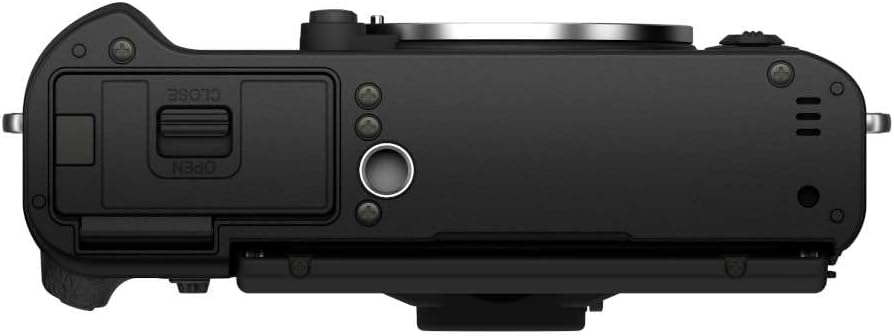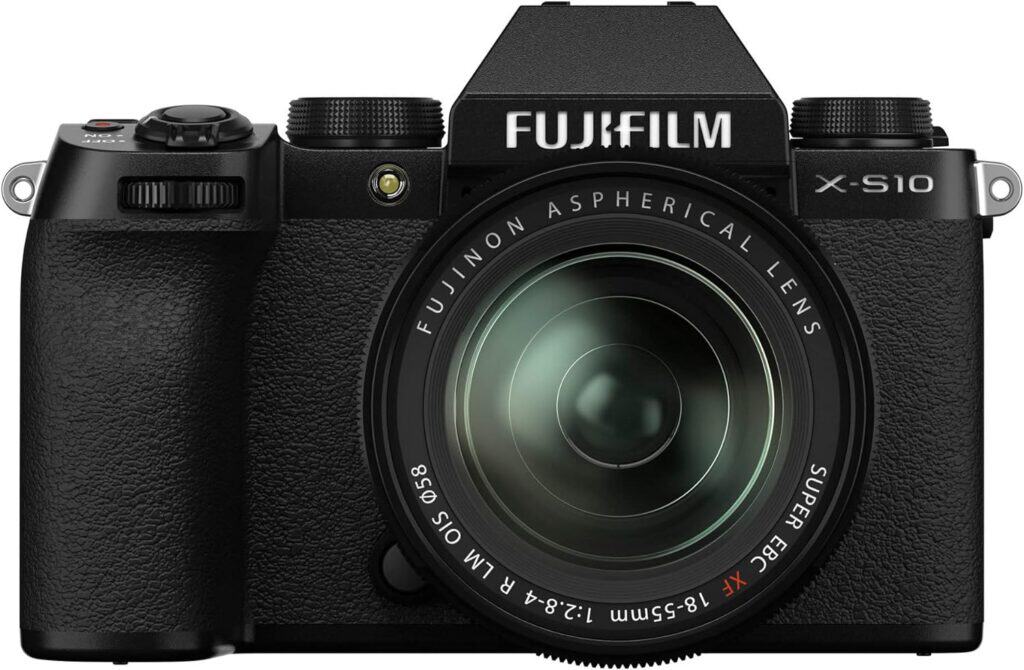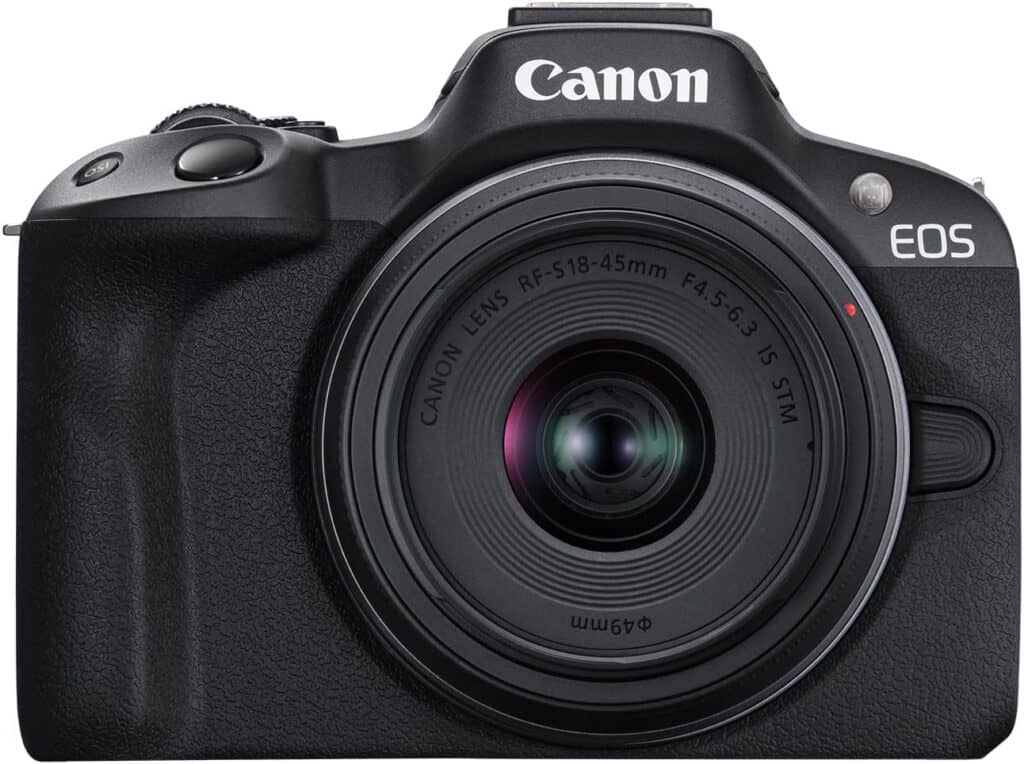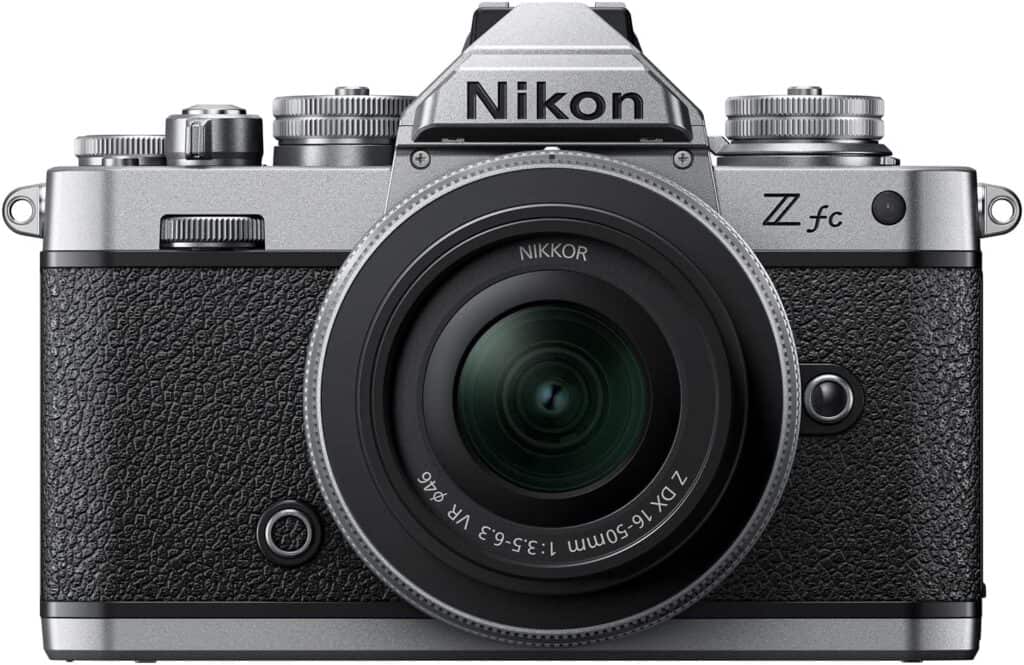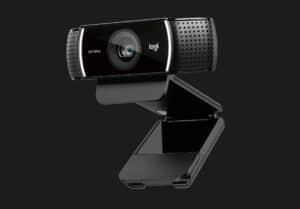The Fujifilm X-T30 is a standout in the field of mirrorless cameras, boasting a blend of advanced imaging technology and a user-friendly design. Ideal for photography enthusiasts and content creators, this compact powerhouse offers high-resolution images and versatile video capabilities. In this review, we delve into the features and performance of the X-T30 to determine if it’s right for your needs.
Castos is a participant in the Amazon Services LLC Associates Program. We may earn commissions from your purchases on Amazon.com, though at no cost to you.
Our Verdict
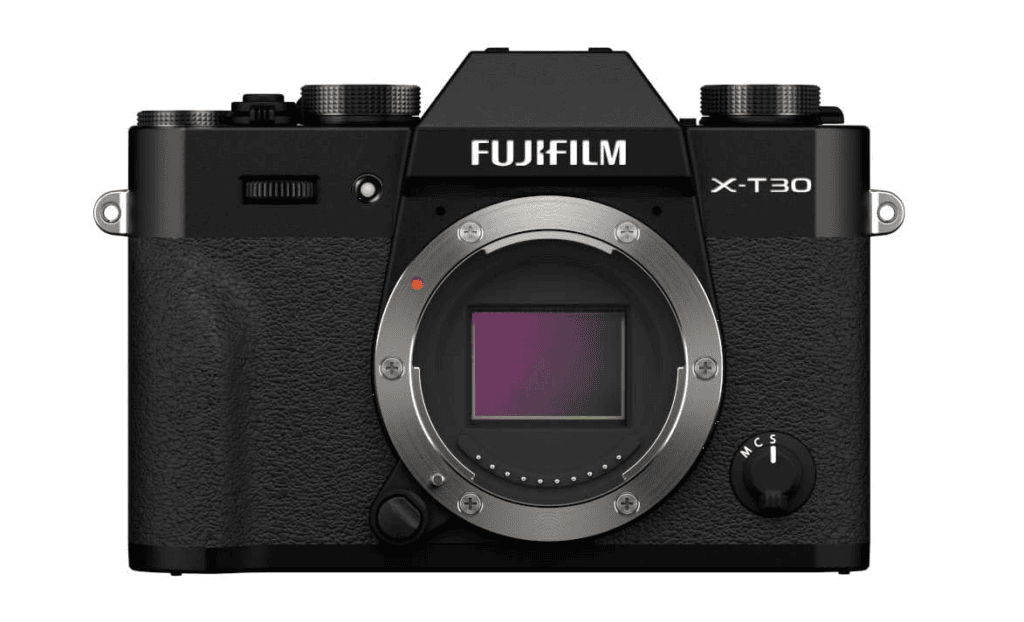
The Fujifilm X-T30 is an excellent choice for content creators who value high image quality and compact design in a mirrorless camera. However, its lack of in-body image stabilization and single card slot may be limiting for some applications and extensive outdoor use.
Pros
- MP X-Trans CMOS 4 sensor delivers superior resolution.
- Supports 4K video and offers high frame rates in 1080p.
- 425 phase-detection points for quick and accurate focusing.
Cons
- Single card slot limits storage expansion and backup options.
- No in-body stabilization (can result in shakier handheld shots).
- Limited battery life requires frequent charging.
Overview of the Fujifilm X-T30
The Fujifilm X-T30 is a compact mirrorless camera renowned for its exceptional image quality and classic design. It boasts a 26.1-megapixel X-Trans CMOS 4 sensor, advanced autofocus capabilities, and versatile video recording options, making it a favorite among content creators for both photography and videography.
Let’s walk through the individual features of the Fujifilm X-T30.
Design and Build
The X-T30 sports a retro aesthetic that appeals to those who appreciate a classic camera look. It’s lightweight and compact, making it highly portable for on-the-go shooting, an ideal trait for podcasters and YouTube creators who need to move their gear frequently.
The camera is constructed with a durable magnesium alloy body, ensuring it can withstand the rigors of frequent use. It’s available in multiple colors, including black, silver, and charcoal.
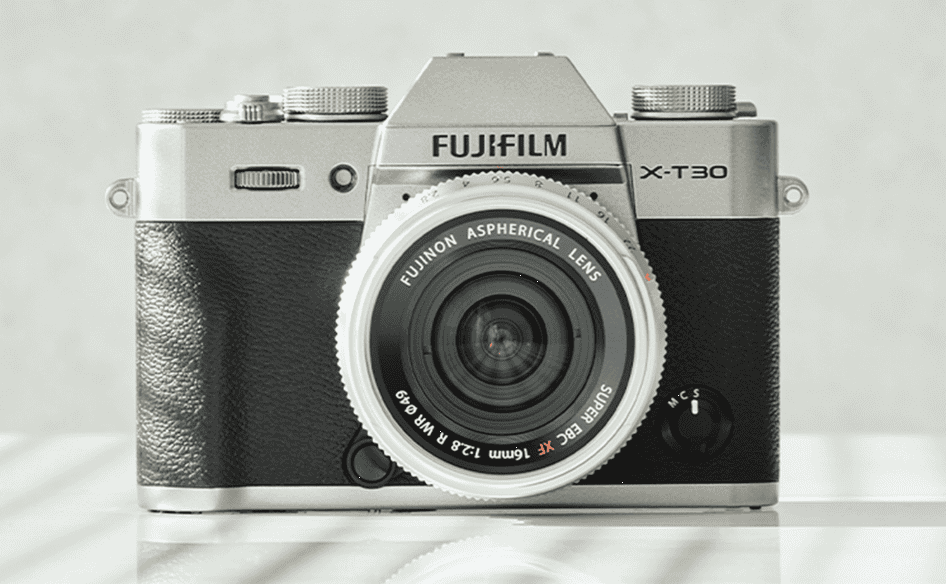
Controls and Handling
Fujifilm’s X-T30 offers intuitive controls that are easy to navigate for both beginners and professionals. The camera includes a touchscreen LCD, which can be tilted for easy viewing at various angles, crucial for vloggers and on-the-move video creators. It also features an electronic viewfinder (EVF) that delivers a clear, high-resolution display.
The physical dials and buttons are strategically placed for quick access to settings, helping users adjust exposure, ISO, and more without losing focus on their subject.
Sensor and Image Quality
The heart of the Fujifilm X-T30 is its 26.1-megapixel X-Trans CMOS 4 sensor, which delivers outstanding image quality with rich color reproduction and sharp detail. This sensor, combined with the X-Processor 4 image processing engine offers superb performance in low-light conditions and high-speed image processing.
The camera supports a high dynamic range and has an impressive ISO sensitivity range, which is essential for capturing high-quality content in various lighting conditions. For video, it can record 4K footage, making it suitable for producing professional-level video content.
Codecs
The Fujifilm X-T30 supports a range of video codecs that are crucial for creators who need flexibility in post-production. It offers the ability to record in both 4K and Full HD at various frame rates, using the high-quality H.264 and the newer, more efficient H.265 (HEVC) codecs.
This choice allows for smaller file sizes with retained high resolution, which is particularly useful for creators who need to manage large amounts of footage.
Additionally, the X-T30 provides an option for F-Log recording, giving creators more latitude in color grading during editing.
Autofocus
Autofocus (AF) in the Fujifilm X-T30 is highly advanced, featuring a fast and precise system that ensures sharp images and smooth video. The camera utilizes phase detection pixels across the entire sensor, which greatly enhances subject tracking and focusing speed, even in challenging lighting conditions. This is particularly beneficial for podcasters and video creators who often record dynamic scenes or conduct interviews.
The X-T30’s Face and Eye Detection capabilities are finely tuned, making it ideal for vlogging and any content that involves human subjects.
Live Streaming
For podcasters and YouTube creators looking to engage with live audiences, the Fujifilm X-T30 is equipped to support live streaming with excellent video quality. By connecting the camera to a computer via HDMI and using additional software, users can stream 1080p video directly to platforms like YouTube and Twitch.
The camera’s compact size and superior image quality make it a great choice for streaming in-studio or on-location. Its robust autofocus system ensures that the subject remains in focus during live interactions.
Power and Connectivity
The X-T30 supports both USB-C and HDMI, which are essential for fast data transfer and connecting to external monitors or recorders. It also features built-in Wi-Fi and Bluetooth connectivity for remote camera control and easy file transfer to smartphones or tablets.
Storage
Storage flexibility is key for content creators, and the Fujifilm X-T30 offers dual storage options with its single SD card slot that supports UHS-I cards. While it might seem limiting to have just one slot, the camera supports high-capacity SD cards, allowing extensive shooting sessions without the need for frequent swaps.
Viewfinder
The X-T30 has a high-resolution 2.36 million dot OLED electronic viewfinder (EVF), providing a bright and clear view under various lighting conditions. The EVF offers a 100% coverage area, ensuring that what you see is exactly what you capture. This feature is especially useful for video creators and podcasters who require precise framing and focus in their visual content.
The eye-sensor automatically switches between the EVF and the LCD screen, enhancing usability and ensuring quick, intuitive shooting.
Battery
The battery life of the Fujifilm X-T30 is capable of capturing up to 380 frames on a single charge when using the EVF. While this capacity is adequate for casual shooting, prolonged shooting sessions or video recording might require additional batteries or the use of a power bank.
Fortunately, the X-T30 supports USB charging, which can be particularly convenient for creators on the move, allowing for continuous shooting during long production days or while traveling.
What’s in the Box of the Fujifilm X-T30?
When purchasing the Fujifilm X-T30, the box typically includes the following items:
- Fujifilm X-T30 Camera Body – The core of the package, available in various colors depending on your choice.
- Body Cap – To protect the camera sensor and interior when a lens is not attached.
- Rechargeable Battery NP-W126S – Provides power to the camera, capable of shooting approximately 380 frames on a full charge.
- Battery Charger BC-W126S – Used to recharge the battery.
- Shoulder Strap – For carrying the camera more conveniently during shoots.
- Metal Strap Clip – Helps attach the shoulder strap securely to the camera.
- Clip Attaching Tool – Aids in the installation of the metal strap clips.
- USB Cable – For connecting the camera to a computer for data transfer or to charge the battery.
This kit provides all the essentials needed to start shooting, though lenses are typically sold separately unless purchased as part of a kit that specifically includes them.
Specifications of the Fujifilm X-T30
The Fujifilm X-T30’s range of impressive specifications make it a strong contender in the mirrorless camera market. Here are the key specifications:
- Sensor: 26.1-megapixel APS-C X-Trans CMOS 4 sensor.
- Image Processor: X-Processor 4 quad-core CPU.
- ISO Range: 160-12800 (expandable from 80 to 51200).
- Autofocus: Hybrid AF system with 425 points (phase detection).
- Viewfinder: 2.36 million dot OLED electronic viewfinder, 0.62x magnification.
- Monitor: 3-inch tilting touchscreen LCD with 1.04 million dots.
- Video Recording:
- 4K video recording at 30fps or 1080p at 120fps.
- Supports H.264/MPEG-4 AVC as well as H.265/HEVC for greater compression efficiency.
- F-Log recording and 10-bit output via HDMI.
- Continuous Shooting Speed: Up to 8 fps with mechanical shutter and 20 fps with electronic shutter (30 fps with 1.25x crop).
- Shutter Speed: 1/4000 sec to 900 sec (mechanical), 1/32000 sec to 900 sec (electronic).
- Built-in Flash: Yes, with commander mode capabilities.
- Connectivity: Wi-Fi and Bluetooth for remote camera control and image transfer.
- Battery Life: Approximately 380 frames per charge (NP-W126S).
- Storage: Single SD card slot (UHS-I).
- Body Build: Magnesium alloy body for durability.
- Dimensions: 118.4 x 82.8 x 46.8 mm.
- Weight: Approximately 383 grams (including battery and SD card).
Who is the Fujifilm X-T30 For?
The Fujifilm X-T30 is a versatile device for a broad range of users. It’s appealing to those who require a portable and discreet camera for travel or street photography. The advanced imaging capabilities and high-quality video features also make it suitable for content creators, including vloggers, YouTubers, and podcasters, who need a reliable camera for both stills and video that delivers excellent image quality.
Additionally, the X-T30 is well-suited for amateur photographers looking to upgrade from smartphone photography or from entry-level cameras. Its advanced autofocus system and fast shooting speeds benefit sports and wildlife photographers who need to capture fast-moving subjects.
The Fujifilm X-T30 is a versatile camera that caters to a wide range of photographic needs and styles. It’s a worthwhile investment for anyone serious about their photography or videography.
The extensive lens lineup available from Fujifilm, which includes high-quality primes and versatile zooms, ensures that users can expand their photographic capabilities as they grow into the system.
Fujifilm X-T30 Alternatives
If the X-T30 isn’t right for you, check out some of these popular alternatives:
Fujifilm X-S10
The Fujifilm X-S10 is a compelling alternative due to its in-body image stabilization (IBIS), which is absent in the X-T30. This feature is particularly beneficial for videographers and photographers who often shoot handheld in dynamic environments.
The X-S10 also offers a more ergonomic grip and similar image quality, making it an attractive option for those who prioritize comfort and stability alongside high performance.
Canon R50
As an entry-level mirrorless camera, the Canon R50 is particularly well-suited for beginners or those transitioning from smartphones to more serious photography. It features enhanced autofocus capabilities, user-friendly interfaces, and compatibility with Canon’s extensive range of RF lenses.
Nikon Z fc
The Nikon Z fc stands out with its distinctive retro styling that harks back to classic Nikon film cameras, appealing to those who appreciate vintage aesthetics. It features a fully articulating touchscreen which is ideal for vloggers and self-shooters.
Additionally, the Nikon Z fc benefits from Nikon’s color science, which offers unique image rendering that might appeal to users looking for a particular look straight out of camera.
Fujifilm X-T30 Review FAQs
Here are some common questions people ask about the X-T30.
Is the Fujifilm X-T30 II a professional camera?
The Fujifilm X-T30 II is more targeted towards enthusiasts and prosumers, but it can be suitable for professionals in some contexts, especially where portability and color rendition are critical.
How many megapixels is the X-T30?
The Fujifilm X-T30 features a 26.1-megapixel sensor.
Why was the Fuji XT4 discontinued?
As of my last update, the Fuji XT4 has not been discontinued and remains a popular model within Fujifilm’s lineup.
Why are Fujifilm cameras so expensive?
Fujifilm cameras are often expensive due to their high-quality sensors, unique color science, and robust build quality, along with extensive research and development in imaging technology.
Is XT30 good for beginners?
Yes, the XT30 is good for beginners due to its user-friendly interface, helpful automatic modes, and excellent image quality.
Can the Fujifilm X-T30 shoot 4K video?
Yes, the Fujifilm X-T30 can shoot 4K video at up to 30 frames per second.
Does the X-T30 have built-in image stabilization?
No, the X-T30 does not have built-in image stabilization; users need to rely on lenses with optical stabilization or external stabilizers for video.
What kind of memory card does the X-T30 use?
The X-T30 uses SD, SDHC, and SDXC cards, and it supports UHS-I speed class.
How does the autofocus performance of the X-T30 compare to DSLRs?
The autofocus system of the X-T30 is very competitive, with fast and accurate performance thanks to its phase-detection pixels covering the entire sensor, making it comparable to many DSLRs.
Is the X-T30 compatible with all Fujinon lenses?
The X-T30 is compatible with all Fujifilm X-mount lenses, offering a wide range of options for different photography styles and needs.
Should You Buy the Fujifilm X-T30 Camera?
The Fujifilm X-T30 excels with its outstanding image quality, thanks to the 26.1-megapixel X-Trans CMOS 4 sensor known for superior color reproduction. It’s also highly regarded for its video capabilities, including 4K recording, which makes it a suitable option for content creators. The intuitive user interface and responsive autofocus system make it appeal to both beginners and experienced users.
However, there are some downsides to consider. The camera is equipped with only one SD card slot, which might be disappointing if you require instant backup during shoots.
The battery life, while adequate for casual use, may fall short during extended shooting sessions, so you’ll need additional batteries or frequent charging.
Furthermore, the lack of In-Body Image Stabilization (IBIS) could be a significant limitation for those who often shoot video handheld or work in low-light environments.
In summary, the Fujifilm X-T30 is a compelling choice for those prioritizing image quality and portability. However, if your work requires more robust video capabilities or extended use without access to charging, the limitations regarding IBIS and battery life might prompt you to consider other options.
If you enjoyed this review, please check out some of our other camera reviews:

